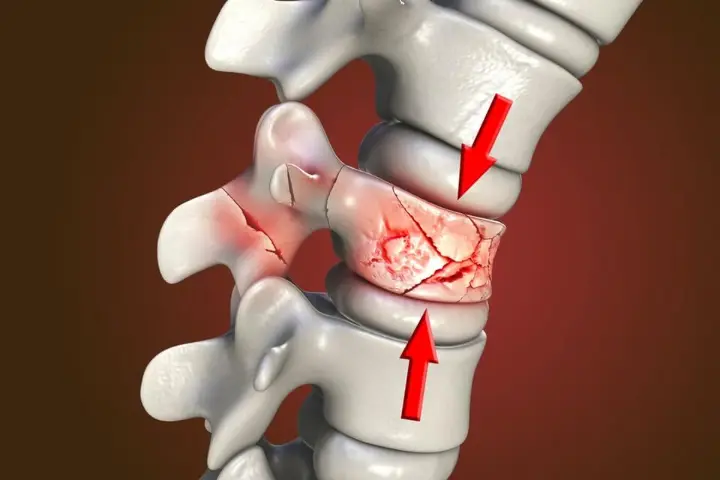Vertebral Breaks or Cracks in the Lower Back
What Is a Lumbar Fracture?
A lumbar fracture refers to a break in one of the vertebrae (spinal bones) in the lower back. These injuries can range from mild compression fractures to more severe burst fractures and are often the result of trauma, osteoporosis, or underlying spinal conditions. Depending on severity, they can lead to significant pain, spinal instability, or nerve damage.
Causes and Risk Factors
- High-impact trauma (e.g., car accidents, falls from height)
- Osteoporosis (weakened bones prone to compression fractures)
- Repetitive stress injuries (common in athletes and laborers)
- Spinal tumors or infections that weaken the bone
- Advanced age and postmenopausal status (especially in women)
Symptoms
- Sudden, sharp pain in the lower back
- Pain that worsens with standing, walking, or movement
- Loss of height or visible curvature of the spine (kyphosis)
- Difficulty standing upright or performing daily tasks
- In severe cases: numbness, tingling, or weakness in the legs (signs of spinal cord or nerve involvement)
Diagnosis
- Physical examination and review of symptoms
- Neurologic assessment to evaluate for nerve involvement
- Imaging:
- X-ray to confirm bone injury
- CT scan to assess the extent of the fracture
- MRI if soft tissue, nerve, or spinal cord injury is suspected
Treatment
Non-Surgical Treatment
- Common for stable fractures, especially compression fractures without nerve damage
- Pain management with NSAIDs or short-term opioids
- Back bracing to support the spine while healing
- Gradual return to activity with physical therapy
- Calcium and vitamin D supplementation (if osteoporosis is present)
Surgical Treatment
- Recommended for unstable or severe fractures
- Surgical options may include:
- Kyphoplasty or vertebroplasty: Minimally invasive procedures that use bone cement to stabilize compression fractures
- Spinal fusion: Stabilizes the spine using rods and screws if the vertebrae are significantly displaced or if the spinal cord is at risk
- Decompression surgery: To relieve pressure on spinal nerves if neurological symptoms are present
Recovery Timeline
- Stable fractures may heal in 6–12 weeks with conservative care
- Bracing is often worn for 8–12 weeks
- Surgical patients may need several months for full recovery and rehabilitation
- Return to normal activity depends on bone healing, neurological status, and physical therapy progression
Expert Treatment at Kerlan Jobe Institute
The spine specialists at Kerlan Jobe Institute are highly experienced in managing lumbar fractures of all types — from common osteoporotic compression fractures to complex trauma-related injuries. With a multidisciplinary approach, we tailor each treatment plan to ensure safe healing and optimal recovery.

